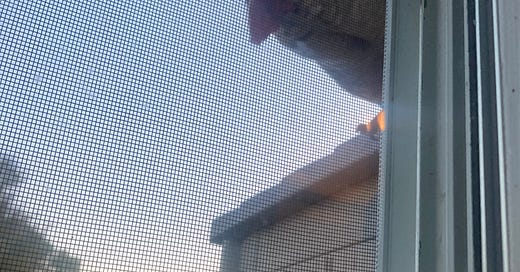“There goes your street cred,” my nephew said. It was a snarky remark made at my expense because I’d told the family about a couple of turkeys we had recently purchased for our holiday meals. They were a handsome pair of Narragansetts. Both the hen and the tom were on the light side for birds intended to be the centerpiece of a festive table. Nonetheless, I held out hope that with active foraging and a little Rooster Booster to supplement they would be up to “fighting” weight by November 28 and December 25.
Do let me be clear about something before I move on. I don’t hold much truck with those “Alabama one pen” hobby farms that are overrun with midget goats, baby doll sheep, donkeys the size of small dogs, and always, of course, a Great Pyrenees or two guarding their four sheep. I’m never sure if the owners are preparing for a circus for little kids or working for Toys for Tots—because livestock has a purpose, and there are no free rides on this working farm. Yes, yes, it is true that we have two completely useless dogs. And Big Bird, our last Pomeranian goose, was given a pension to live out her life in peace until she died at age 21. But in practice and in conviction, all domesticated animals here need to produce to justify their feeding, a point that Cindy voiced recently as I sat in the shade with a beer and a book.
The morning after the turkeys’ arrival was the first time I began to sense I was on shaky ground. That was when the hen spotted me doing the feeding chores, and leapt over the fence out of the orchard. We had clipped one wing on each bird the day before, then released them among the fallen apples and pears with the idea of speeding the fattening process. Having escaped the orchard, as I filled buckets, opened gates, slopped hogs, put out fresh hay, she stayed right next to me, like a shadow, intensely curious about everything I did. The tom followed, but like most males, paid me no mind. He spent his time puffing up, brightening the color of his wattles, bumping the hen, trying to get some attention and then (hopefully) some action.
That evening as the sun set, Cindy and I gathered in the backyard with friends, catching up while seated in a circle in our Adirondacks. The turkeys joined us. The hen perched on an armrest, and the male stood in the middle of our group, as if they were genuinely interested in the conversation. Perhaps their behavior was a calculated bid to ingratiate, charm even, the man who wields the axe. In any case it worked. A few days later in an email thread with family, I mentioned that the pair had gotten a reprieve. It was at this point that my nephew informed me of the loss of my street cred as a cold-hearted and practical farmer.
So be it. The pair of turkeys now follows me the quarter-mile walk to the mailbox and back up the gravel drive. Most predawn mornings, when the hen sees the lights come on in the house, she jumps off her roost on the corral fence near the barn to come and investigate. Sometimes, as I’m washing dishes from the night before, I hear a scratching at the kitchen window. There is the hen, perched on the wooden lattice just outside, cocking her head to better follow my every move. But yesterday took the cake. As I sat typing at my desk, just when the sun began to break over the ridge I caught a movement out of the corner of my eye. The female turkey had jumped up on a seven-foot-tall storage closet next to the window. For the next hour she hung out, craning her neck as she watched me write. This fascination for me is certainly understandable: it clearly shows a finely-tuned discernment and good judgment, which naturally should be rewarded.
So now I’ve worked out a simple justification—a rationalization, the more jaded of my readers would say—for not butchering the birds for our holiday dinners. One, they are just too lightweight at this juncture. The juice is simply not worth the squeeze, as they say. Two, their breed is on the “threatened” list of The Livestock Conservancy, which means I’m doing important conservation work by granting the reprieve. Three, as a mating pair, they could produce ample offspring over the next year. The happy result of that synergy would be both an increased population of the Narragansett breed and a steady supply to our holiday table, for years to come.
I am more than pleased with this tidy bit of reasoning. Since no one really needs to know that I have a soft spot (and do let us keep that among us, dear friends), keeping them from adorning the table will be seen, rightly, as a smart and practical decision by this cold-hearted farmer.
Well, I must leave off composing this farm note. My new feathered friend is at the door reminding me that it is time to go feed the livestock, and she does hate to be kept waiting.
………………………………………………………………
Reading recently: Change in the Farm (T. Hennell); Liberty Hyde Bailey, essential agrarian and environmental writings (ed. Z. Jack); and The Hobbit (J.R.R. Tolkien).
………………………………………………………………
A reminder that my WordPress blog has moved. You can find these essays and the full archive (dating back to 2011) here. Or, you can continue to receive new posts right here on Substack.





Wise use of your dominion. Approbo.
Haha! That's so sweet. I won't tell anyone my friend. Haha!